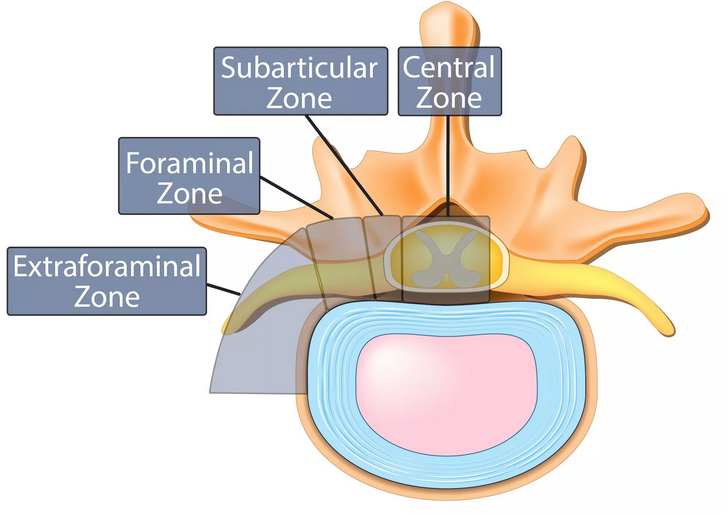The Difference Between a Bulging Disc and a Herniated Disc
Before we get into the details of a bulging disc and herniated discs is important to understand the basics of the spine and disc anatomy.
Spine Anatomy: Your spine serves the essential functions of providing your body support and structure, allowing you to stand, bend, and twist. The spine also protects your spinal cord (part of the central nervous system) which is a highway of nerve signals allowing you to move and feel sensations. The spine is comprised of 33 bones which are divided into three major sections:
- Cervical: seven vertebrae that form the neck
- Thoracic: twelve vertebrae that form the upper and mid-back
- Lumbar: five vertebrae that form the lower back
Each vertebra is separated by a fibrous intervertebral disc (IVD) which is made up two parts:
- Nucleus pulposus: This is the jelly-like inner core of the disc. It is made up of roughly 80% water as well as collagen fibers. Its elasticity allows each disc to act as a shock absorber for the spine.
- Annulus fibrosus: The annulus is made up of seven to 15 layers of fibers surrounding and protecting the nucleus. Each has a slight arch or curvature of about 30° that provides traction and structural support for the disc.
When your spine moves the discs in your adjust slightly to support the vertebrae. For example, when you bend over the anterior (front of your disc) compresses and the posterior (back of the disc) stretches.
 Types of Herniated and Bulging Discs
Types of Herniated and Bulging Discs
A Herniated Disc and Bulging discs can occur in the Cervical, Thoracic, or Lumbar areas of the spine.
- Cervical disc herniation: This is when a disc herniates in the neck. It is one of the most common causes of neck pain.
- Thoracic disc herniation: This is when a disc herniates in the upper or mid-back.
- Lumbar disc herniation: This is when a disc herniates in the lower back. It is a common cause of lower back pain.
Herniated and Bulging discs can also be classified by the area of the disc they invade (herniation zone).
- Central: When the disc trusts or forces into in the spinal cord.
- Subarticular (Lateral Recess or Paracentral): When the disc extrudes between the spinal cord and the foramen (the space through which the nerves exit the spinal canal).
- Foraminal (Lateral): Disc extrusion into the foramen.
- Extraforaminal (Far Lateral): Disc extrusion beyond the foramen.


